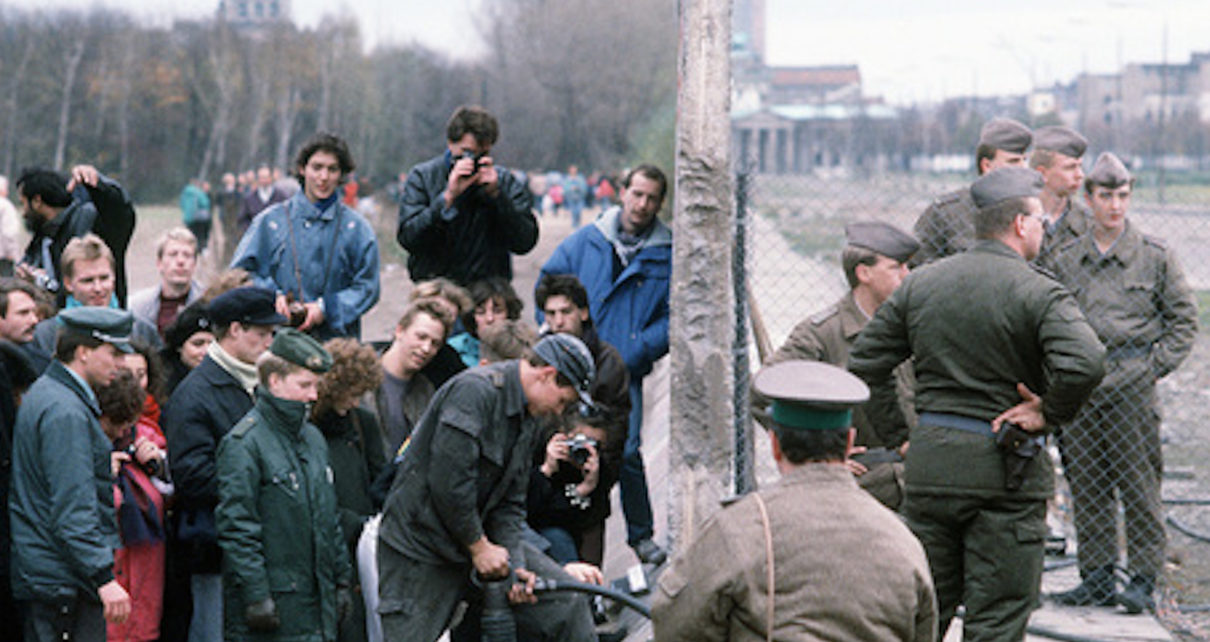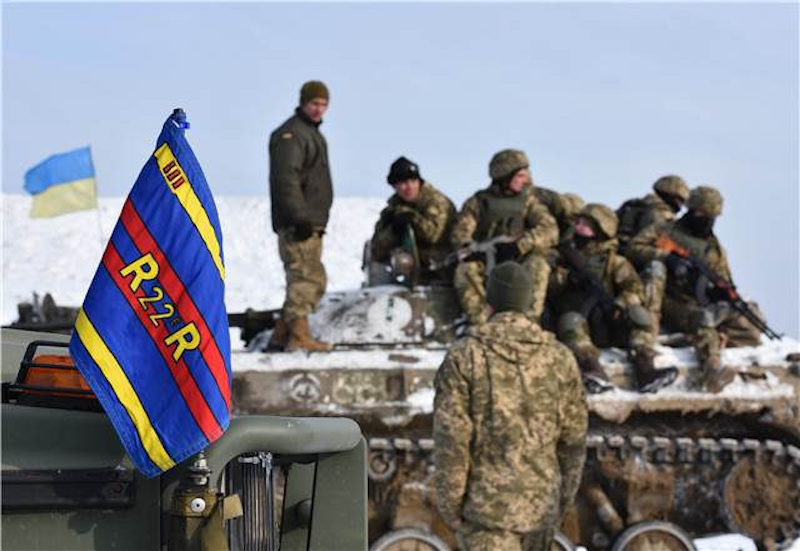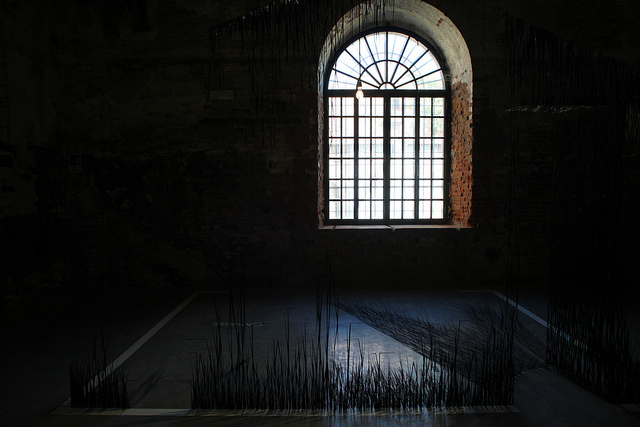A common trope in Russia’s discourse about NATO is the charge that the organization has not dealt with Moscow in good faith. Many Russians, of which Putin is a particularly vocal example, allege that Western officials assured their Soviet counterparts during the Two Plus Four negotiations (West Germany and East Germany plus the US, USSR, France, and the UK) on German reunification in 1990 that NATO would “not expand eastwards.” At the ceremony marking Russia’s unilateral annexation of four Ukrainian oblasts, Putin invoked a laundry list of grievances against the West for its allegedly duplicitous past treatment of Russia, including the claim that its “firm promises not to expand NATO to the east gave way to dirty deception as soon as our former leaders bought into them.” NATO has publicly disputed Putin’s claim.
The Russian charge deserves careful consideration. It is generally accepted among international relations scholars that cooperation between states can only be cultivated by the development of trust between them. That trust can only be earned through an iterative learning process by which different parties establish patterns of consistent behaviour, thereby reducing levels of unpredictability in which one state assumes the worst about the other state’s intentions. Therefore, it is critical to establish whether NATO’s behaviour in the 1990s diverged from its past rhetoric, breached good faith, or did anything that would stoke Russian security concerns. The leaders of Allied nations did not subject the Soviets to a bait-and-switch; they were compelled to react to the tectonic transformation of Eastern Europe between 1989 and 1991. They did not “promise” to forbear from enlarging the organization easterwards because they could not have foreseen the contingencies that might require this to happen.
It is an incontrovertible fact that any “guarantee” between Moscow and alliance members regarding NATO enlargement – if there ever was one – did not take the form of a written agreement. No document has ever been produced to this effect, and even scholars sympathetic to Russia’s grievances against NATO acknowledge this point. In fact, the North Atlantic Treaty is the basis of NATO’s “Open Door” policy, stipulating in Article 10: “The Parties may, by unanimous agreement, invite any other European State in a position to further the principles of this Treaty and to contribute to the security of the North Atlantic area to accede to this Treaty.”
However, a series of verbal exchanges between Soviet and Western officials accompanied the negotiations over German reunification, and the substance of this dialogue deserves scrutiny. This is the source base from which some Russians and their Western sympathizers make the claim that NATO deceived Moscow about its intentions to enlarge.
Professor Joshua R. Itzkowitz Shifrinson of MIT is a defender of this narrative of Russian victimization. Shifrinson’s thesis is predicated on a neorealist characterization of NATO as a tool used by the US to exercise its dominance in Europe; he is skeptical of what he deems the “cooperation narrative” in international relations theory and the use of the example of East-West relations at the end of the Cold War to buttress it.
Shifrinson observes that the priority for the US in the winter of 1990, when the Germans began to seriously explore the prospect of reunification after the recent fall of the Berlin Wall, was to keep a reunified Germany within NATO. West German and American diplomatic officials, including US Secretary of State James Baker, gave public support to the idea that NATO would not expand “east” in exchange for Soviet compliance in German reunification. Shifrinson identifies a meeting between Baker, Mikhail Gorbachev, and Soviet Foreign Minister Eduard Shevardnadze on February 9, 1990 in Moscow as a critical moment. It was there that the archival evidence suggests Baker proposed a “quid quo pro”: a united Germany would remain in NATO, but that NATO military units, infrastructure, and nuclear weapons would not apply to the former German Democratic Republic once it was reunified with the Federal Republic of Germany. Gorbachev agreed to this. What the Soviet leader got in return was a four-year extension on the timeline for removing unwanted Soviet occupation troops from East Germany (which were not fully removed until 1994) and a substantial sum from the West German government to pay for their demobilization.
The context of these negotiations makes clear that talk of not expanding “eastward” was a reference to East Germany. Shifrinson goes beyond these facts to infer what he thinks it supposedly would have meant: “In any ordinary sense of the term ‘eastward,’ all of the countries to which NATO expanded in the 1990s would remain outside the Western orbit. Soviet leaders were effectively promised that Soviet cooperation on Germany would be met by Western restraint.” This is a controversial interpretation that ignores the very limited scope of the discussion. Schifrinson goes on to state: “Logically, if NATO did not militarily move into the territory of this [former Soviet] ally, then it would be unlikely to move further east to include less important states.” But this assumes too much of the subsequent historical record and implies that decision-makers were thinking this far ahead when hammering out the terms of the agreement on German reunification.
Mary Elise Sarotte, who unequivocally dismisses the Russian claim of having received a formal gurantee from the West that NATO would not enlarge, is somewhat more credulous that the negotiations of February 1990 were undertaken with an eye to the region beyond East Germany. However, she produces only a solitary piece of private correspondence between the West German and British foreign ministers of the time that suggests that these two men might have been contemplating the prospect of other Eastern European states desiring NATO membership and the need to allay Moscow’s fears about this. This correspondence did not involve Baker, and there is no evidence to suggest that this line of thought worked its way into Baker’s subsequent negotiations with Gorbachev.
A properly historicized analysis of the circumstances surrounding the negotiations of 1990 makes it clear that the breakup of the Soviet Union, much less the entire Warsaw Pact, was not a foregone conclusion at the time. Thus, any notion that Soviet and Western planners were already determining the fate of the post-Cold War continent is anachronistic. That serious discussion of NATO enlargement did not begin until the mid-1990s – after the situation had drastically changed across all of Europe, and the breakup of the Eastern Bloc, including the Soviet Union, was an accomplished fact – is indicative of the narrow extent of the discussion between Baker and Gorbachev in February 1990.
As recently as 2014, Gorbachev set the record straight that whatever transpired between Western and Soviet officials in 1990 on the subject of NATO was limited to the question of East Germany, a qualification that makes sense given the context and the subject at hand. Soviet priorities were confined to keeping non-German NATO units and nuclear weapons out of the former GDR. The question of whether other Eastern Bloc states would join NATO, Gorbachev says, was never raised. How could it have been otherwise, when the expectation at the time was that the Soviet Union would endure? The August 1991 Coup had yet to hammer the final nail into the USSR’s coffin.
Shifrinson appeals to subsequent meetings involving Baker, such as one that took place in Moscow in May 1990, in which the US Secretary of State presented assurances from the US government that the Organization for Security and Cooperation in Europe (OSCE) would be integral to a new European security structure, that conventional forces in Europe would be limited, and that NATO would take on an increasingly political character. At the North Atlantic Council’s meeting in London in July, it released the “London Declaration,” or a “Declaration on a Transformed North Atlantic Alliance,” in which members pledged, in light of the changes transpiring in Eastern Europe, “that security and stability do not lie solely in the military dimension, and we intend to enhance the political component of our Alliance as provided for by Article 2 of our Treaty.” Shifrinson argues that subsequent NATO enlargement was a violation of these overtures in principle.
While Shifrinson is correct to point out that the US envisioned a security architecture that included the Soviet Union and emphasized the political dimension of NATO, his argument goes awry by assuming – without adequate warrant – that NATO expansion was somehow at odds with this plan:
“The point of U.S. proposals was not that NATO would disappear, but that Europe would become more cooperative and more integrated. By implication, NATO was unlikely to enlarge beyond Germany as it became less relevant to Europe’s security landscape.”
Again, Shifrinson infers a meaning that simply does not follow from the facts. NATO membership is one of the primary means by which the organization realizes its political goals of fostering cooperation between states; it is not counterproductive to these ends. Neorealists like Shifrinson and John Mearsheimer have difficulty making sense of the endurance of NATO after the collapse of the Soviet Union precisely because they fail to understand this secondary function of the organization. It is not just a military alliance, much less one solely directed at Russia.
The promises Shifrinson lists as having been part of the “package” of US and NATO diplomatic overtures in 1989-1990 were actually met in subsequent years. NATO military infrastructure, especially nuclear weapons, were kept out of the former GDR. NATO and the Warsaw Pact limited the size of their conventional forces through the Treaty on Conventional Armed Forces in Europe. The Soviet Union, and then Russia, along with all former Soviet republics and Warsaw Pact states, were integrated into a new European security system by means of the North Atlantic Cooperative Council (NACC), granting their respective representatives access to NATO headquarters in Brussels, even Supreme Headquarters Allied Powers Europe (SHAPE). The establishment of the NATO-Russia Council at the turn of the twenty-first century was accompanied by relative Russian equanimity about NATO expansion.
The OSCE, previously the Conference on Security and Cooperation in Europe, which the USSR hoped would become the foundation of a new system of European security, had clearly stipulated in Article 1 of the Helsinki Accords (1975) that members, “have the right to belong or not to belong to international organizations, to be or not to be a party to bilateral or multilateral treaties including the right to be or not to be a party to treaties of alliance; they also have the right to neutrality.” This was reaffirmed in the Charter of Paris (1990), to which the Soviet Union acceded. All of this was in complete harmony with Article 52 of the UN Charter, which grants states the right to enter into regional security arrangments.
Finally, NATO retained a mostly political character in Eastern Europe even after enlargement was completed, as per the Russians’ supposed wishes. One of the reasons for NATO’s endurance after its primary adversary disappeared was that it evolved. Included in its concessions were that international NATO troop deployments to new members were undertaken only on a contingency basis, and nuclear weapons were not placed on former Warsaw Pact territory. Some of the most influential proponents of the enlargement of NATO – Ronald Amus, Richard Kugler, and Stephen Larrabee – argued in 1995 that the West “will have failed” if the Eastern European states invited into NATO achieved military interoperability with the rest of its members but fail to develop truly liberal and democratic political institutions.
Forward deployments of “full-scale multinational forces” against Russia were not proposed in the 1990s. Rather, proponents of enlargement advocated a “self-defence dominant” strategy in which new NATO members would be responsible for their own military preparedness and yet rely on “power projection” from more powerful NATO states on a contingency basis. NATO’s security guarantee in Eastern Europe after enlargement was largely based on the Article 5 “tripwire” effect rather than the stationing of foreign troops or nuclear weapons. At substantial financial and strategic cost, NATO has only deployed troops on a rotating basis to Eastern Europe, not to static forward defences, as part of its good-faith compliance with a 1997 agreement with Moscow. Ironically, NATO has only reinforced its military presence in Eastern Europe in response to Russian aggression against Ukraine since 2014.
The unexpected breakup of the entire Soviet empire in the early 1990s subsequently presented policymakers with many exigencies borne of the security vacuum created by continental communist collapse. These are the extenuating circumstances that are absent from Shifrinson’s analysis. Ensuring that heavily armed former Warsaw Pact states did not descend into anarchy after the withdrawal of Soviet forces was one of the primary motives behind expediting NATO enlargement for select countries, notably Poland, Hungary, and the former Czechoslovakia. As Kimberly Marten of Columbia University avers, “the change in alliance structures did not start in the West, or on NATO’s initiative. Instead, it began in the final days of the Soviet Union when Poland, Hungary, and Czechoslovakia…decided to withdraw from the Soviet-led Warsaw Pact.”
Later in the decade, US Deputy Secretary of State Strobe Talbott would appeal to the example of Spain’s accession to NATO to illustrate this very point. When post-Franco Spain was threatened with a military coup in 1981, the democratic leader of the country, Leopoldo Calvo Sotelo, sought Spain’s membership in NATO to guarantee civilian control over its armed forces. It became a member in 1982. Similarly, NATO served as an important democratizing “anchor” in Eastern Europe.
Some have argued that NATO filling the vacuum created by Soviet withdrawal was actually advantageous to Russian security interests. It neutralized the threat of autocratic, nationalist regimes taking root in Eastern European countries like Poland. The last thing a weakened Russia needed in the 1990s was newly liberated and potentially revanchist states on its western border, nursing historical anti-Russian resentments. It should be borne in mind that the borders of Soviet satellite countries like Poland were heavily manipulated, and their ethnic populations ill-treated, while they were under Soviet dominion. The possibility of an outbreak of inter-ethnic violence, so starkly displayed in the former Yugoslavia, could not have been lost on the Russians. “[NATO] enlargement,” Ronald Asmus wrote in 2008, “has created more democratic stability on Russia’s western border than at any time since Napoleon.”
The bulk of the evidence weighs against the idea that NATO actively misled the Soviets about integrating other former Warsaw Pact states into the alliance. This concept simply was not on the table in 1990. The West’s specific guarantee – that former East Germany would have a special military status within NATO – was the only limitation on NATO that the parties to the Two Plus Four negotiations formalized in Article 5 of the “Treaty on the Final Settlement with Respect to Germany,” which they signed in 1990. Of course, it is possible that Soviet officials wishfully thought that such an agreement amounted to a blanket delimitation of NATO’s borders, but even this is unlikely, as it credits them with possessing improbable prescience for the time.
A more likely scenario is that Russians invented the myth of a “no-expansion” deal and retrospectively read it into history for instrumental reasons. The fabrication of “stabbed-in-the-back” myths to explain sudden and humiliating geopolitical disasters (a description befitting Russia’s loss of former Warsaw Pact allies and fellow Soviet republics to their former common adversary) and scapegoating traditional enemies is nothing new. Even the neorealist John Mearsheimer, who in an infamous article in Foreign Affairs in 2014 castigated the West and NATO enlargement for causing Russia’s invasion of Crimea, never brings up the claim of a purported “broken promise.” Perhaps it is because even this strident apologist for Putin’s foreign policy senses the tenuousness of the Russian allegation.
Whatever the source of the Russian “no-expansion” legend, it certainly did not originate in the “firm commitment” of the West in any kind of empirical-historical sense as President Putin would have the world believe. No promise was “broken” because no promise was ever made.
Photo: “A crowd gathers on the West German side of the Berlin Wall at Potsdamer Platz to watch as the structure is dismantled” (1989) by U.S. National Archives via picryl. Public Domain.
Disclaimer: Any views or opinions expressed in articles are solely those of the authors and do not necessarily represent the views of the NATO Association of Canada.




